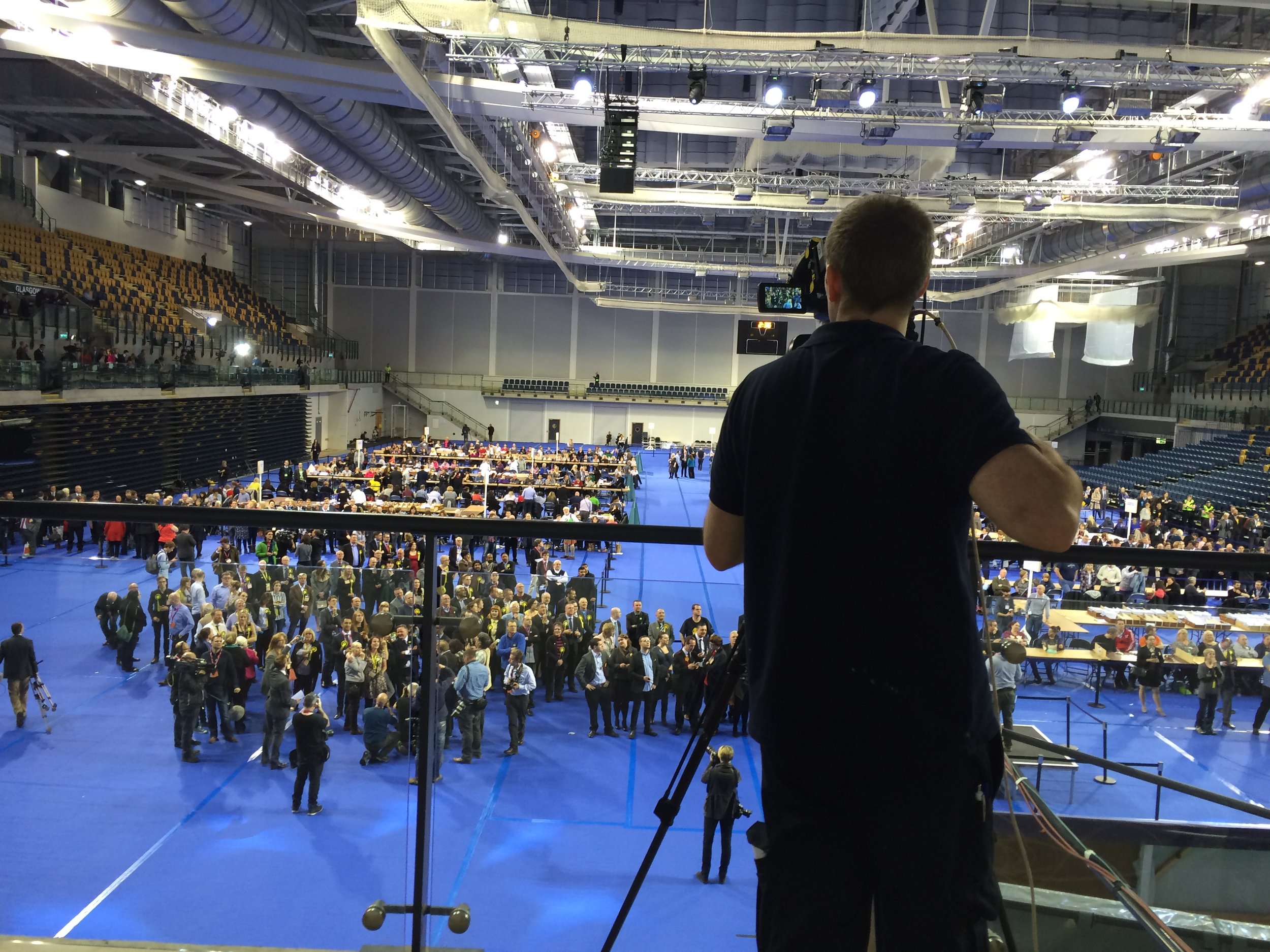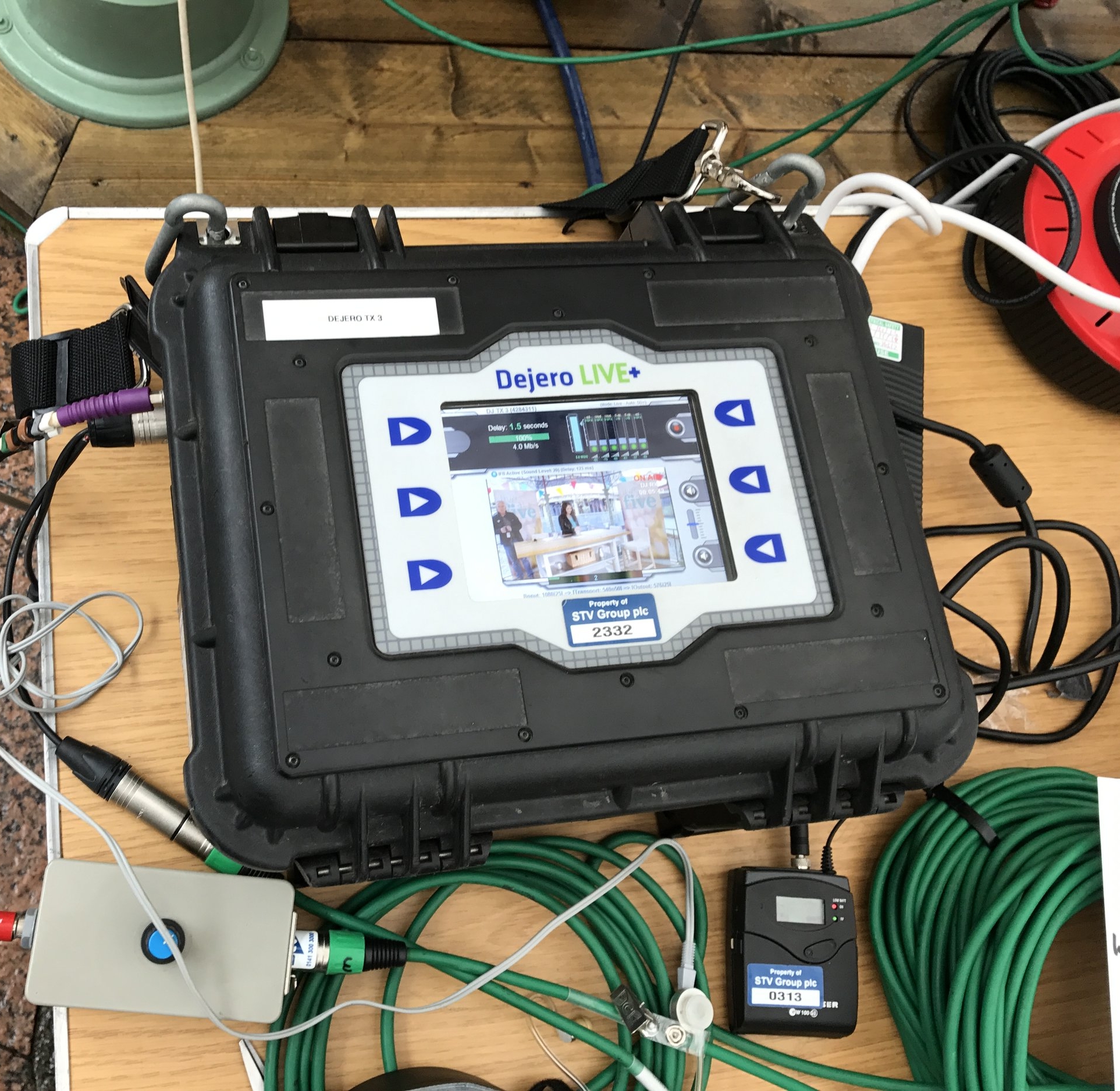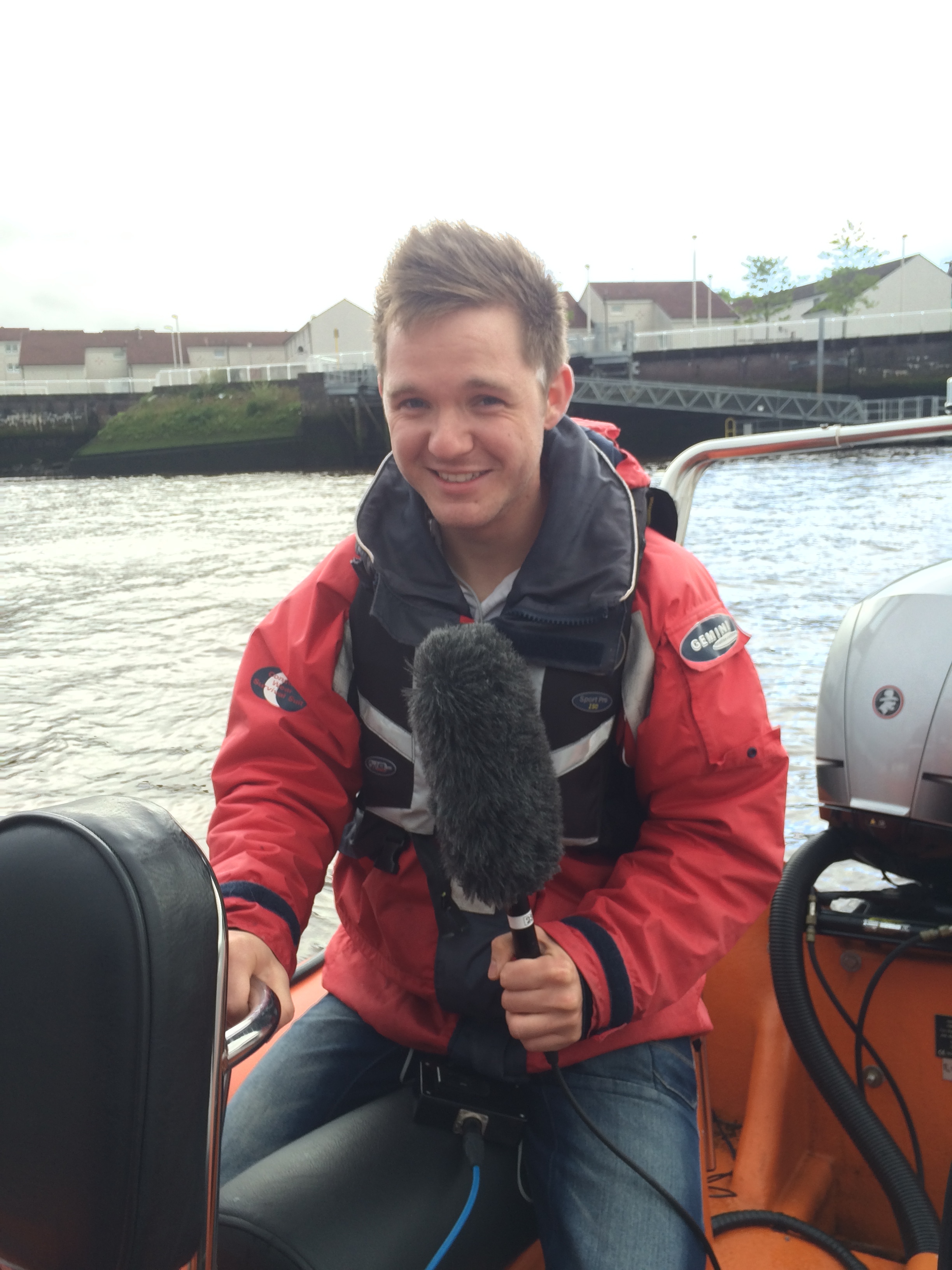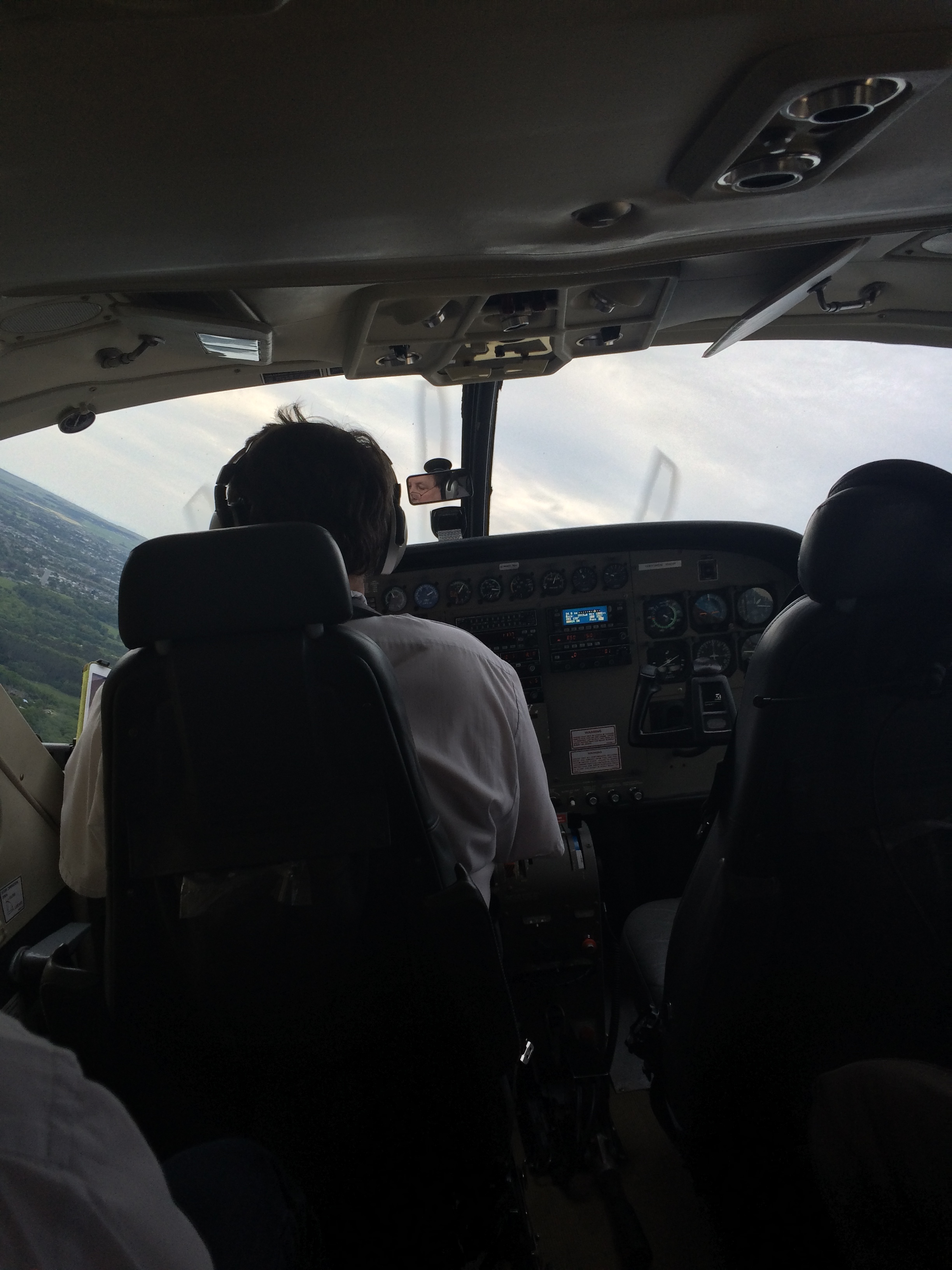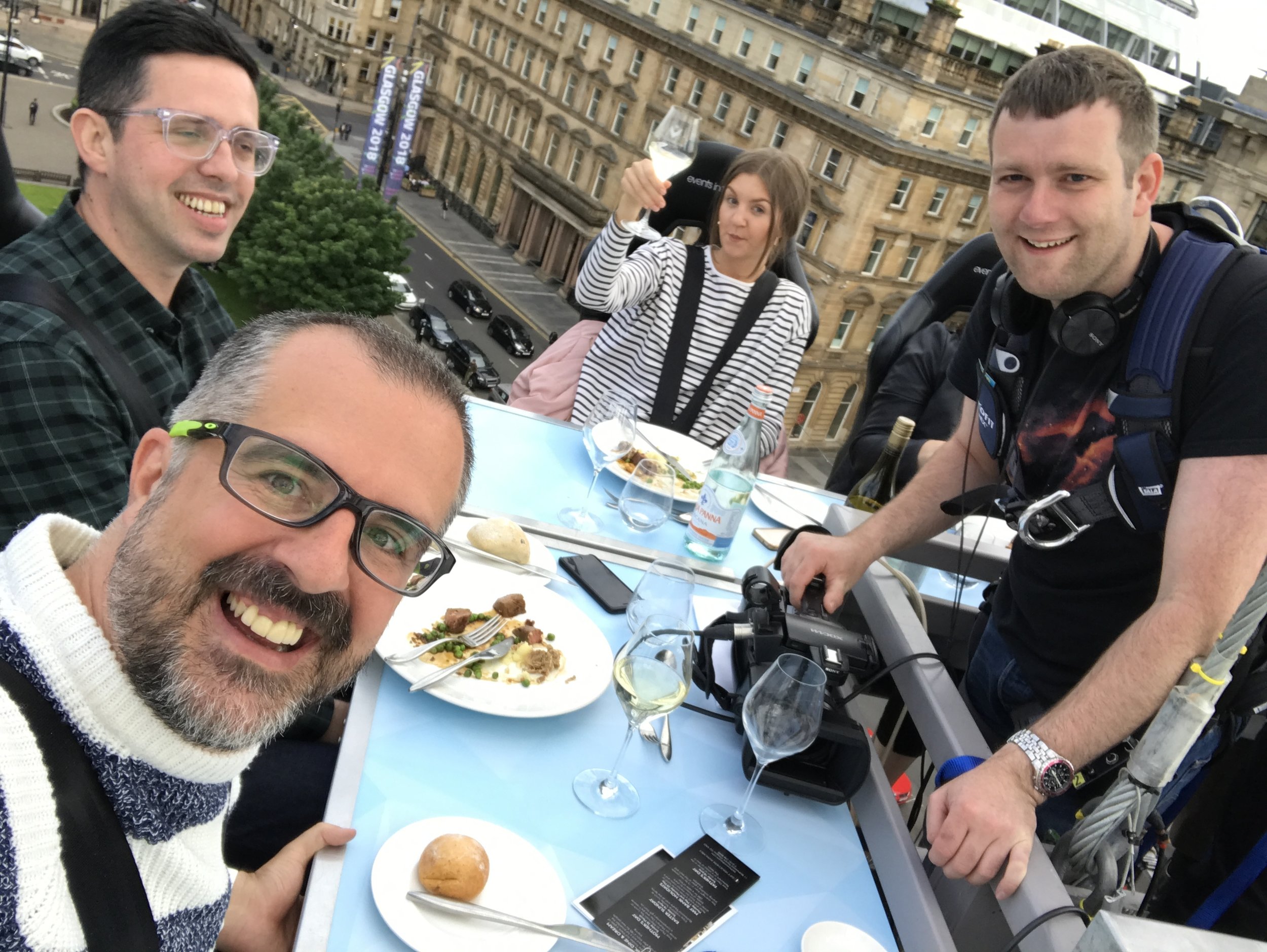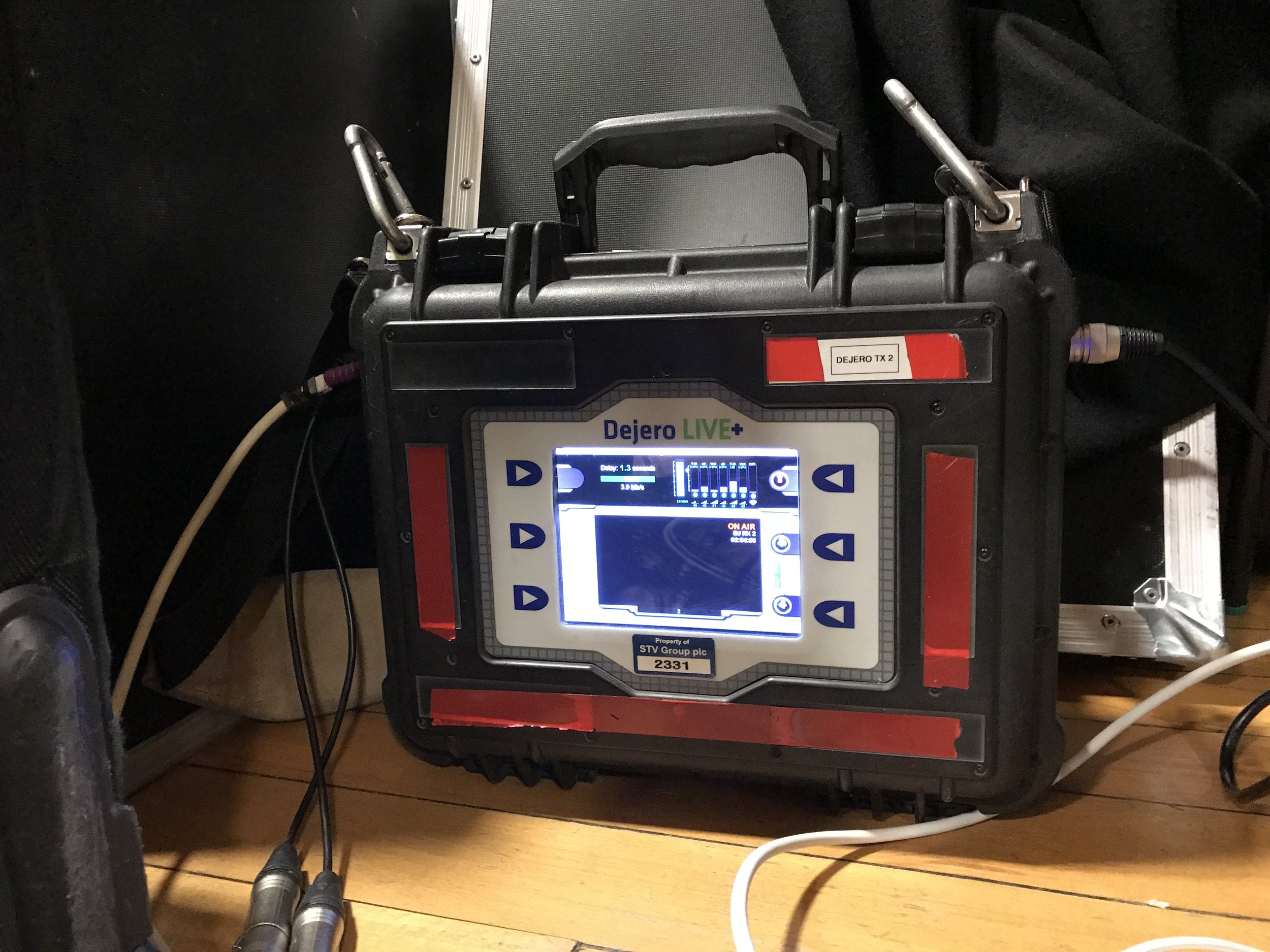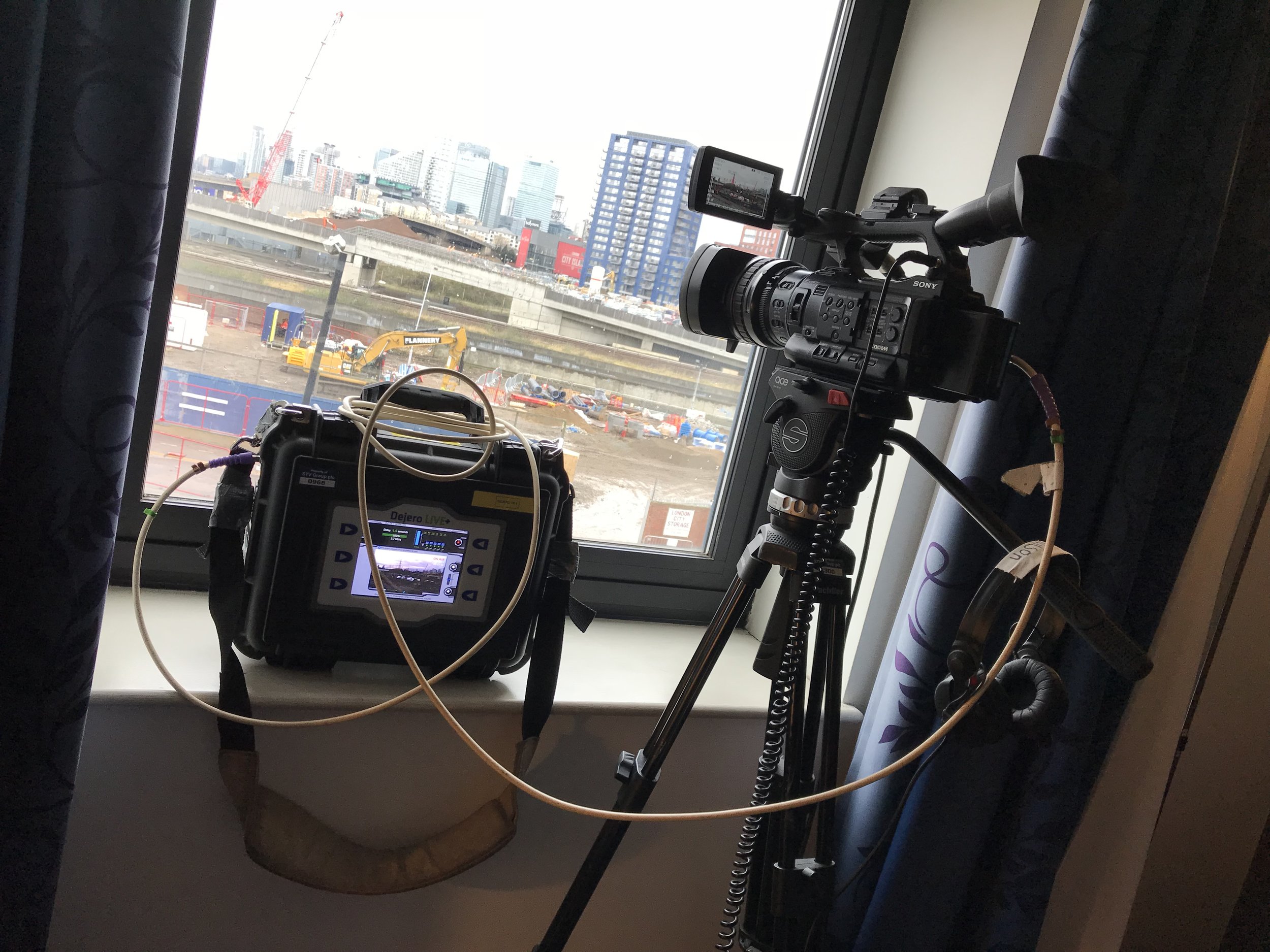Live Television can be scary.
Live Television when you're on location with just yourself and a reporter can be scarier.
The studio environment can be intense, but being surrounded by professionals who can react and adjust to things going wrong at a moments notice make it more comfortable.
Broadcasting Election coverage in 2015
When I've been out live on location, 99% of the time there has been just two of us.
Gone are the days when you'd go out with a full crew consisting of a Camera Op, Sound Person, Producer, Runner and Reporter.
Not to mention a Satellite Truck with an Engineer inside to beam the pictures back to base so they can be played out on television.
Nope, technology and dwindling budgets have now brought it to a place where only two people are required, and in a more worrying trend, it can be down to a reporter to do it all themselves.
Fortunately for all involved I am someone who prefers to stay behind the camera, so if you ever see me in front of one something has went very badly wrong.
In my natural environment, behind the camera
I was first introduced to working on location, on a live show, in 2014.
I shadowed and cable bashed for a couple of different Camera Ops before I was eventually let loose behind the camera.
My first foray ended up being one of the most memorable for a couple of reasons.
I was still under supervision, so a talented Camera Op named Marco Federici was with me, helping me set things up and keeping me on the right track, but I was let loose on the camera by myself as he watched, ready to takeover in case I did something wrong or some unforeseen technical error occurred that I wouldn't have the knowledge or experience to fix.
Moments before the inevitable
It was a fairly simple live. The "Roving Reporter", as he was called, was supposed to be taking part in a sushi making class.
Now the thing to note here is that the Roving Reporter, was a young and naive lad called Colin Stone.
Colin is from the north of Scotland, and when I say the north of Scotland, I mean pretty much as far north as you can go before you'll have to start swimming.
To say he didn't have much experience of foreign cuisine would be being polite. In my time working with him his standard lunch was chicken and rice, and the most adventurous he got was putting jam on a bagel.
But anyway, back to the sushi class.
During the Live Hit (we call live on location segments a "hit") Colin was encouraged by the Chef taking the class to try some wasabi on freshly made sushi rolls.
Not really knowing what wasabi was, Colin asked the Chef how much he should put on.
With a twinkle in his eyes, the Chef replied "Lather it on.... really go for it...."
I knew what was about to happen, Marco knew what was about to happen, and the Chef definitely knew what was about happen, as Colin puts a massive scoop of wasabi onto his sushi and chows down.
What happened next can only be described as TV gold.
Poor Colin chews away for a couple of seconds, curious why we're all staring at him with wide, expectant eyes.
Then the spice and heat of the wasabi kicks in, and he turns into a spluttering mess with tears streaming down his face, whilst looking at us and shouting "You're so cruel! You're so cruel!".
We also had tears streaming down our face, but ours were from laughing so much.
If you listened closely, you can hear Marco and myself struggling to hold it together.
Poor, poor Colin
On a side-note, the Chef as it turned out was none other than Gary McLean, winner of Masterchef The Professionals in 2016.
Many years later when I met him again for another shoot, he informed me that that was his first time appearing on Live Television. So to know I shot that is quite a fun little thing for me.
You may have noticed I said that on Lives it's just the two of us.
"So how do you broadcast these high quality, and no doubt excellent lives back to the studio when there is just two of you and no satellite truck, producer or sound person?" I hear you cry.
Well I'm glad you asked.
Producing and presentation generally fell to the reporter, meaning they'd phone ahead to wherever it was we were going and organise someone to interview when we got there.
They'd then prep the interviewee ahead of broadcast, write their own PTC (Piece To Camera) and collaborate with the camera op, generally me, as to what the live segment would involve.
I would be in charge of all the technical stuff such as setting the audio levels, manning the camera and broadcasting pictures back to the studio.
A Dejero broadcasting live
Without having a Sat Truck, we relied on quite a clever piece of technology called a Dejero.
The tech has moved on quite a bit since I first started using it, but in the early days a Dejero was a box about the size of a briefcase with a few buttons on the front, a little screen to interact with, a couple of connection types to hook a camera up with, and about half a dozen SIM cards inside.
As long as we could get a decent phone signal from our location, we could broadcast HD quality pictures back to base.
Really innovative.
The newer ones have been shrunk down to be only slightly larger than an average brick and they lock onto the back of the camera directly, so you're not having to worry about carrying reels of cables around with you.
There are other makes and models on the market, but the one I have used most is the Dejero.
Because they are so small and compact, it does mean we could do things on a live that would normally be very challenging or cost a lot of money.
Some of the more notable ones were broadcasting from a speedboat going at 50+MPH, flying over Glasgow in a seaplane, a trolley dash for kids around a toy shop, and having dinner whilst being suspended from a crane 100ft in the air.
I said Live television can be scary.
But most of the time it's a lot of fun.
Not knowing what can happen from moment to moment and having to adjust on the fly gets the adrenaline going and can lead to a lot of good stories.
Which I have in abundance.
Maybe I'll tell you about them some time.
- M

